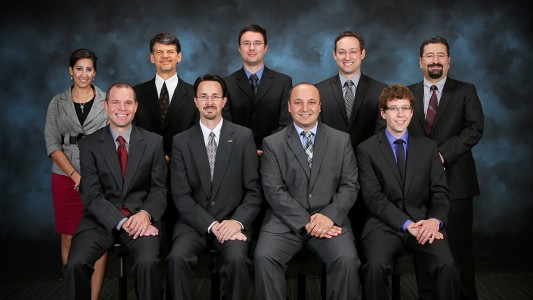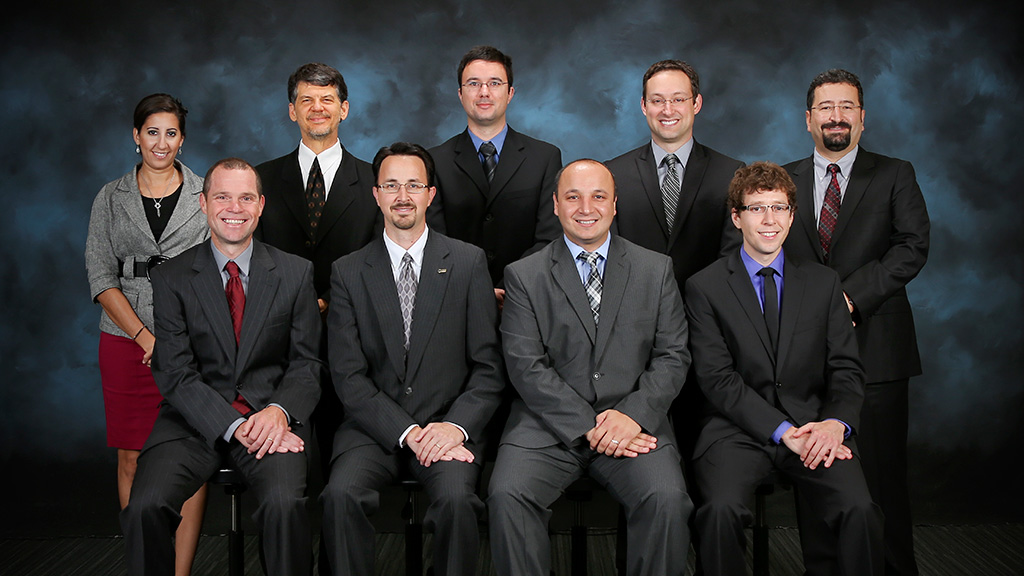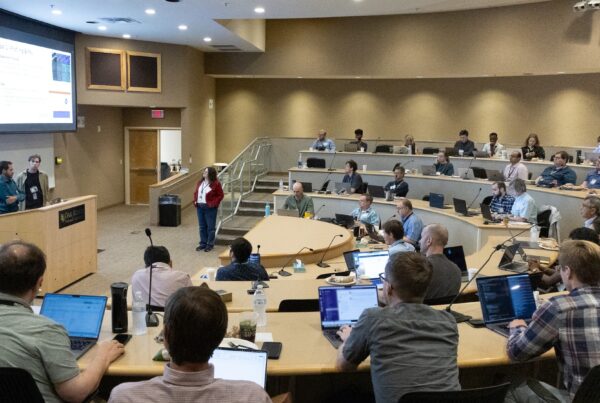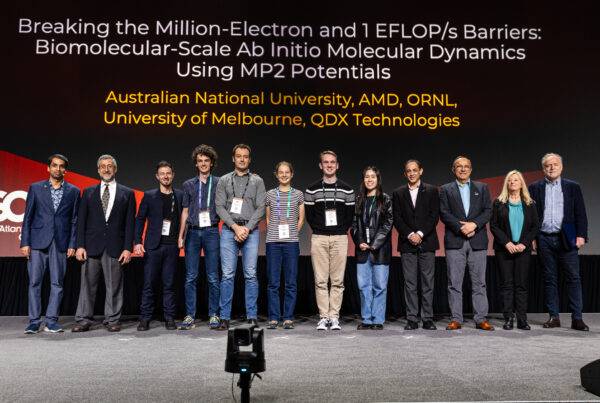
Members of the CASL team are (standing, left to right): Tara Pandya, Wayne Joubert, Steve Hamilton, Gregory Davidson, and Kursat Bekar and (sitting, left to right): Thomas Evans, Andrew Godfrey, Cihangir Celik, and Seth Johnson (Ross Bartlett not pictured).
Several OLCF employees honored at annual laboratory wide awards night
For their groundbreaking research on nuclear reactors, teaching the next generation about supercomputing, and research into cost savings, several Oak Ridge Leadership Computing Facility (OLCF) staff members were among the awardees at the Department of Energy’s (DOE) Oak Ridge National Laboratory’s (ORNL) annual Awards Night celebration on November 7.
Wayne Joubert, computational scientist at the OLCF, won a research accomplishment award for his role in modeling Westinghouse Electric Corporation’s AP1000 nuclear reactor as part of a Consortium for Advanced Simulation of Light Water Reactors (CASL) project.
The CASL project is a designated DOE Innovation Hub. Researchers at innovation hubs are tasked with research to accelerate science that addresses fundamental energy issues. The Westinghouse AP1000 reactors are next-generation nuclear power plants designed to use significantly less materials and land while operating more safely and efficiently. Westinghouse partnered with CASL and the OLCF to computationally model the AP1000 reactors before they were actually built. Joubert explained that by partnering with the OLCF, Westinghouse was able to create more detailed simulations than they could have done on their own.
“It was a validation of the partnership between national labs and industry,” Joubert said. “The scale of Titan simulation capabilities is much larger than what is generally available to industry. CASL entered into this partnership with Westinghouse with the promise of bringing higher fidelity simulations of reactors due to Titan as well as ORNL’s expertise in modelling, simulation, and methods development. This was a successful outcome, demonstrating to Westinghouse that we were able to deliver on that promise.”
While Joubert worked to advance large, high-fidelity nuclear reactor simulations, another OLCF team was working to develop a smaller and more accessible “supercomputer” to help educate the next generation of science and technology professionals; that project earned user support specialists Adam Simpson, Robert French, and Anthony DiGirolamo a Science Communicator Award at the 2014 Awards Night.
Simpson, French, and DiGirolamo came up with a novel, interactive way to teach middle and high school students about parallel computing. Rather than bringing students to the OLCF to show them the Titan supercomputer, the group built a portable, interactive Tiny Titan for science, technology, engineering, and mathematics (STEM) students. “By making Tiny Titan interactive and visually engaging, we’re able to explain parallel computing concepts in a way students can easily understand,” Simpson said.
The team built Tiny Titan out of nine Raspberry Pi computer nodes, which made the project extremely cost effective (the entire machine cost roughly $1,000). The team color coded lights on the Raspberry Pi nodes and programmed them to correspond to simulated images on a screen. Students could see that with more lights on—meaning more nodes were in use—the machine was capable of more rapid computing. Another demonstration the team developed to run on Tiny Titan shows a split screen with one node slowly working to solve a problem beside seven nodes working together to solve the same problem more quickly.
In addition to the first two awards, OLCF deputy project director Kathlyn Boudwin received a mission support award for cost savings related to OLCF operations. —Eric Gedenk
The OLCF is a DOE Office of Science User Facility.
For a complete list of ORNL awards night winners, visit https://web.ornl.gov/info/awards/awards14/index.shtml.
Oak Ridge National Laboratory is supported by the US Department of Energy’s Office of Science. The single largest supporter of basic research in the physical sciences in the United States, the Office of Science is working to address some of the most pressing challenges of our time. For more information, please visit science.energy.gov.






